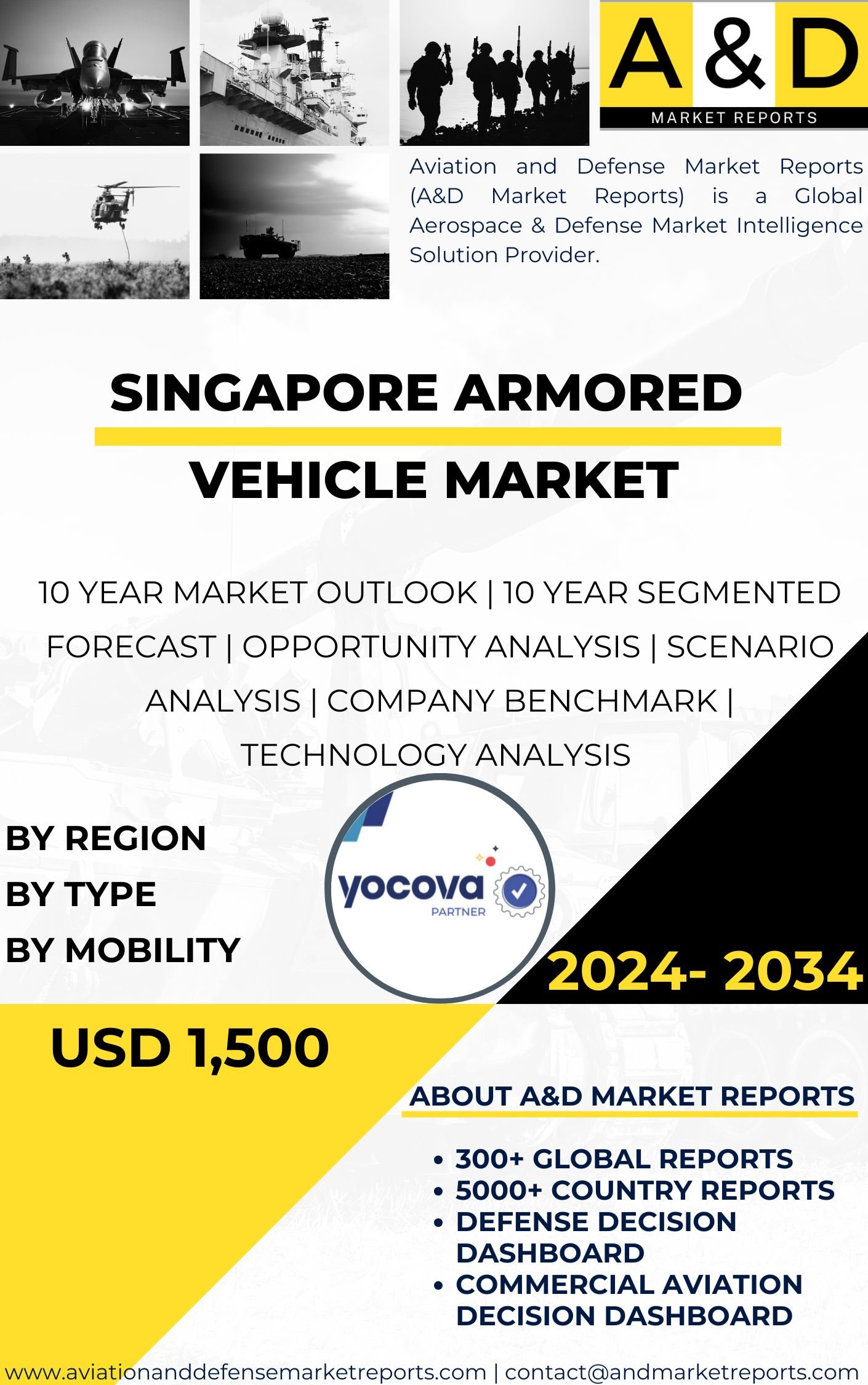Description
Singapore Armored Vehicle Market
The Singapore Armored Vehicle Market has experienced significant growth and development in recent years, reflecting the country’s commitment to enhancing its defense capabilities and strengthening its land-based military forces. Armored vehicles play a crucial role in Singapore’s defense strategy, enabling the country to protect its territorial integrity, respond to potential land-based threats, and support regional stability. The adoption of state-of-the-art armored vehicle technology enables Singapore to establish a modern and well-equipped land force, contributing to the country’s overall defense preparedness and operational effectiveness.
As a small and highly urbanized nation in Southeast Asia, Singapore faces unique security challenges that require innovative solutions. Armored vehicles provide a critical capability for the Singaporean Armed Forces, allowing them to maneuver and operate effectively in urban environments and other challenging terrains.
The armored vehicle market in Singapore has witnessed significant technological advancements. Modern armored vehicles are designed to be highly mobile, well-protected, and equipped with advanced communication and navigation systems. These vehicles offer enhanced firepower, versatility, and survivability, making them essential assets for modern military operations.
Moreover, the adoption of advanced armored vehicle technology supports Singapore’s commitment to technological innovation and military modernization. The Singaporean government has shown interest in developing and procuring indigenous armored vehicle capabilities through local research and development (R&D) initiatives and partnerships with global defense contractors.
The Singaporean government’s emphasis on modernizing its defense capabilities, including its land-based military forces, has positioned the country as a key player in the armored vehicle market. The nation’s defense industry and research institutions have actively collaborated with global defense companies to integrate cutting-edge armored vehicle technologies into the country’s military assets.
The armored vehicle market in Singapore is comprised of various vehicle types, each designed to fulfill specific operational requirements. Some of the key types of armored vehicles in Singapore’s arsenal include Main Battle Tanks (MBTs), Infantry Fighting Vehicles (IFVs), Armored Personnel Carriers (APCs), Light Armored Vehicles (LAVs), and Self-Propelled Artillery.
The adoption of advanced armored vehicle technology provides several benefits to Singapore’s defense posture. First and foremost, these vehicles offer enhanced protection for defense personnel, reducing the risks associated with operating in high-threat environments. The increased mobility and firepower of modern armored vehicles also enhance the maneuverability and combat capabilities of Singapore’s land-based forces.
Moreover, armored vehicles enable the Singaporean Armed Forces to respond effectively to potential land-based threats, protect vital infrastructure and key assets, and support operations in various terrains, including urban areas, dense jungles, and coastal regions.
The Singaporean government has actively pursued technological innovation and local research and development efforts in the armored vehicle domain. By investing in indigenous capabilities, Singapore aims to reduce its dependence on foreign suppliers and strengthen its domestic defense industry.
Collaborations with global defense companies have also played a crucial role in enhancing Singapore’s armored vehicle capabilities. Joint ventures and technology transfer agreements have enabled the country to access advanced technologies and benefit from the expertise of established defense contractors.
One significant aspect of Singapore’s approach to armored vehicles is its emphasis on adaptability and modularity. Many of Singapore’s armored vehicles are designed to be reconfigurable, allowing for easy adaptation to different mission requirements. This approach enhances the versatility of the country’s armored fleet, enabling it to respond effectively to a wide range of operational scenarios.
As part of its defense modernization efforts, Singapore has also explored the use of unmanned ground vehicles (UGVs) and autonomous systems in the armored vehicle domain. These technologies offer the potential to enhance reconnaissance, surveillance, and logistics capabilities while reducing the risk to human personnel in dangerous environments.
In addition to the conventional armed forces, Singapore also deploys armored vehicles within its Home Team, which includes the Singapore Police Force and the Singapore Civil Defence Force. The integration of armored vehicles within the Home Team allows for a coordinated response to various security threats, including terrorist attacks and civil emergencies.
While the armored vehicle market in Singapore shows promise, it is not without challenges. One of the primary hurdles is the need for continuous research and development to keep pace with evolving technologies and to develop customized solutions that cater to specific military requirements.
Additionally, ensuring proper training and education for personnel using armored vehicles is essential to maximize their benefits. The Singaporean Armed Forces must invest in continuous training to ensure that defense personnel possess the necessary expertise to operate and leverage these vehicles effectively.
Moreover, the global defense industry’s competitive landscape and international export controls may impact Singapore’s access to advanced armored vehicle technologies and components. The country must navigate these challenges and engage in strategic partnerships to maintain its armored vehicle capabilities.
Looking ahead, the armored vehicle market in Singapore is poised for further growth. The government’s commitment to technological advancement, military modernization, and support for the local defense industry will drive continued investments in armored vehicle technologies. As armored vehicle systems continue to evolve and demonstrate their effectiveness, they are likely to play an increasingly pivotal role in Singapore’s defense preparedness and military capabilities.
In conclusion, the armored vehicle market in Singapore has experienced significant growth and progress. The government’s focus on technological innovation, military modernization, and support for the local defense industry has paved the way for the integration of modern armored vehicle technologies into the country’s military assets. International collaborations and domestic research efforts have positioned Singapore as a participant in the global armored vehicle technology landscape.
However, challenges related to technological advancements, training, competition, armored vehicle requirements, and engineering expertise must be addressed proactively to sustain and enhance the growth of the armored vehicle market in the years to come. By maintaining a modern and well-equipped land force with advanced armored vehicle capabilities, Singapore can effectively enhance its defense preparedness, strengthen its overall military capabilities, and contribute to regional stability and security.




